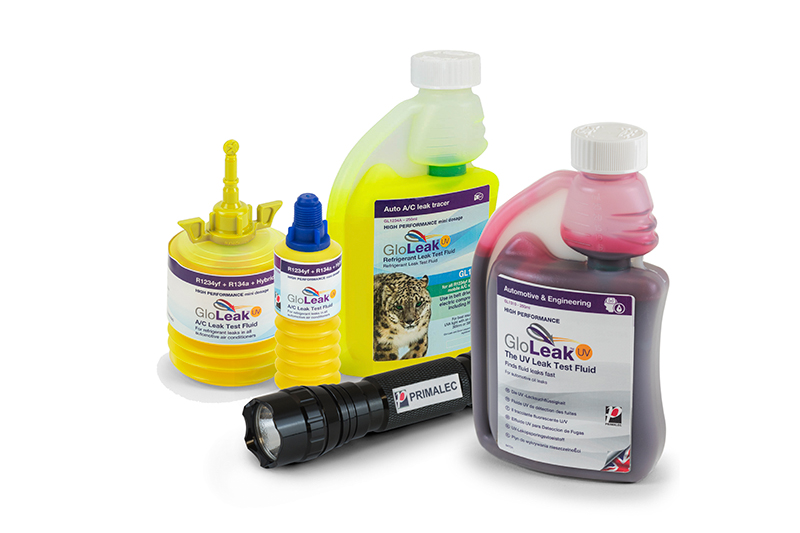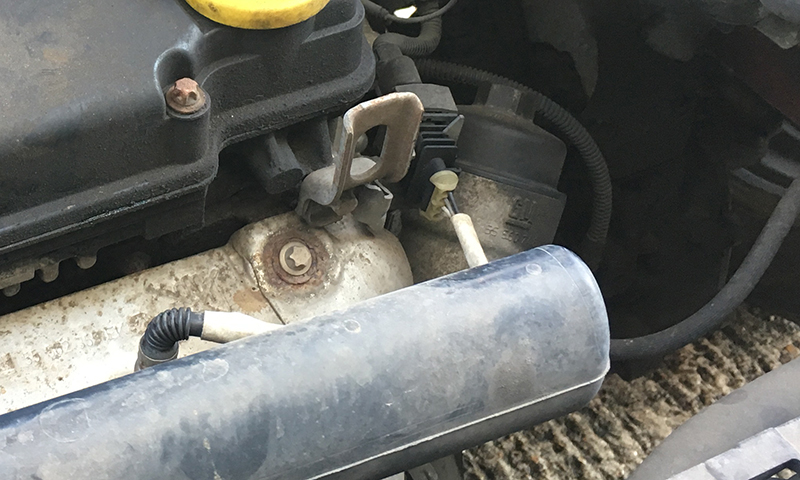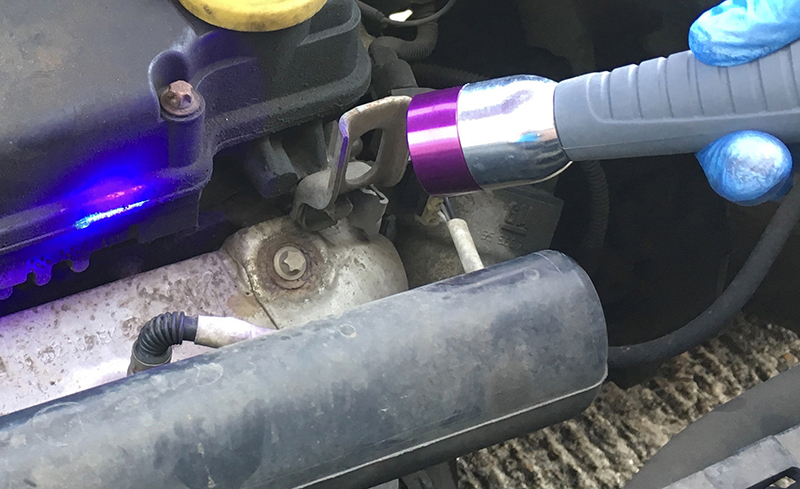
Microscopic leaks in engines can be detected utilising UV technology. Richard Doran, Managing Director of Primalec, goes into further detail.
Fluid leakage that goes unstemmed or undetected is a major cause of equipment failure and environmental contamination. Tight retention of fluids or refrigerants is critical for the safe, efficient and reliable operation of all kinds of equipment. Glo-Leak UV offers a simple and reliable method for achieving this.
Most automotive technicians are familiar with UV-fluorescent dye for leak testing car air conditioners and finding those elusive, invisible refrigerant leaks. But did you know that the same system is widely used in engines, hydraulics, cooling and refrigeration systems at vehicle and engine manufacturing plants as well as in garages?
Large industrial manufacturing plants which use huge tonnages of hydraulic and lubricating oils are also saving money and time with Glo-Leak, even more so with the high cost of oils today. Yet in this high tech age, few things are simpler than the UV system for pinpointing hard to find leaks. It is akin to turning the invisible into the visible at the flick of a switch.
The system is a series of special tracer fluids whose UV-fluorescent properties make them glow under high intensity UV light. They are designed to be totally compatible with the fluids with which they are to be mixed, and can stay in the system after the tests. Simply add a dose to the system under test, run it until the dye is well mixed and had the opportunity to leak out. Then carefully scan the exterior with the UV light.


The range of available Leak Test fluids for garages consists of: Automotive oils and fuels, coolant systems, rainwater ingress and air conditioning. Each is formulated for its compatibility with the respective host fluid.
What will you need? A good UV light source, preferably a rechargeable one that will last and the tracer fluids – oils, coolant and A/C. You can buy them in smartly-cased kits or just as individual parts.
I recommend using a UV light with an output at 365 nm in the electromagnetic spectrum. This is the best wavelength for fluorescing the dyes used in engine and hydraulic oils and fuel, and is also excellent with A/C tracer dyes. There is much less blue light at 365 nm compared to the 400 nm lights mostly sold for A/C dyes but which do not work well with oils. Do wear the supplied amber tinted Extra-Glo glasses because they protect your eyes and enhance the fluorescent effect.
UV technology
UV-fluorescent leak detection was first commercialised in the European aftermarket by Primalec in 1986, although the principle was not new at that time. It was quickly adopted as required equipment for the aftermarket dealer programmes of VMs including Ford of Europe, Jaguar and the Rover Group, who had already used it on their production lines.
In those days, UV lights were big and expensive. Now they are small, inexpensive and LED driven. UV leak detection is one of the most valuable and most affordable essentials for every technician’s diagnostic war chest.









